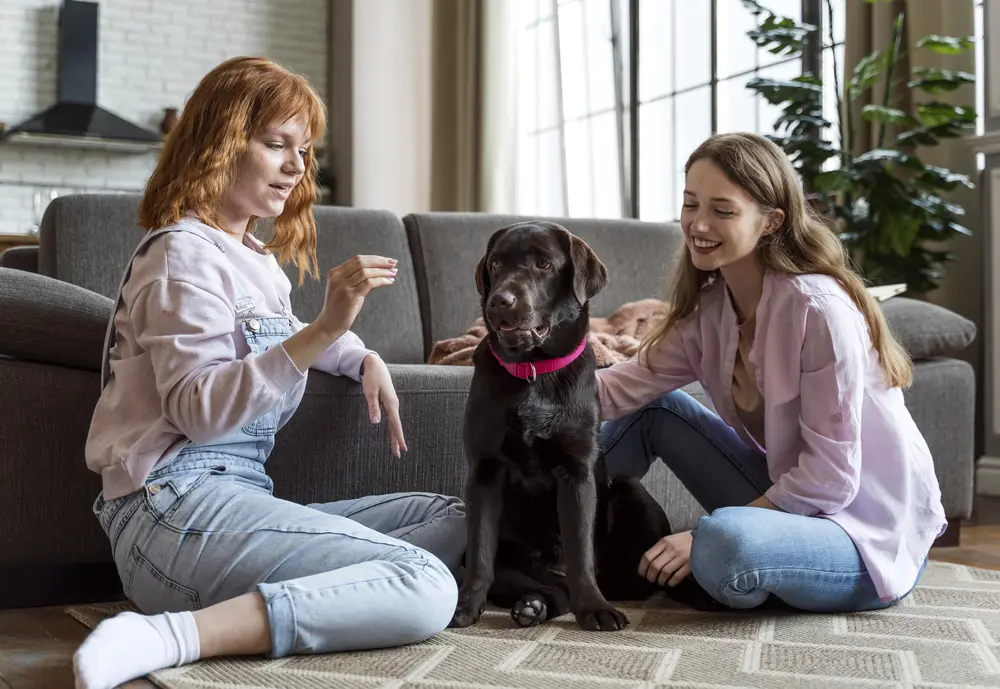Introduction
The world of dogs is a fascinating realm, teeming with diverse breeds, each boasting its unique personality, temperament, and appearance. From the regal Great Danes to the spirited Jack Russells, every breed possesses distinctive traits that attract a wide range of dog enthusiasts. Among these breeds, one stands out for its friendly disposition – the Cavapoo.
Understanding why some dogs are friendlier than others isn’t a straightforward task. It involves a complex interplay of factors such as genetics, early life experiences, socialization, training, and overall health. This article aims to unravel these factors and shed light on what makes some dogs friendlier than others.
Genetics and Dog Temperament
Genetics play a pivotal role in determining a dog’s temperament. Much like humans, dogs inherit genetic predispositions that influence their behaviors and personalities. Certain breeds, like the Hypoallergenic Cavapoo, have been specifically bred over generations for their friendly and sociable nature.
Breeders meticulously select dogs with the desired breeding traits, enhancing these qualities in the offspring. The Cavapoo, a delightful crossbreed between the Cavalier King Charles Spaniel and a Poodle, inherits its friendly demeanor from both parent breeds known for their sociability and affability.
The Role of Early Life Experiences and Socialization
A dog’s early life experiences significantly shape its adult behavior. Puppies exposed to a variety of environments, sounds, people, and experiences during their formative stage are more likely to grow into well-rounded, friendly adult dogs.
Socialization is a crucial part of this process. Introducing a puppy to other dogs, people, and various situations at a young age helps them become comfortable around others, making them more amiable. Regular exposure to different elements of the world enhances their adaptability and fosters positive reactions to changes.
Training and Nurturing
Training is a cornerstone in shaping a dog’s friendliness. The process of teaching a dog how to behave in various situations, especially around other people and animals, is a critical component in raising a friendly canine. It’s about teaching commands, instilling good manners, and fostering a positive attitude toward others.
Consistent training using positive reinforcement methods tends to produce well-behaved and sociable dogs. This approach focuses on rewarding good behavior, which encourages the dog to repeat it. Whether it’s a treat, praise, or a favorite toy, these rewards motivate dogs to behave well. On the other hand, undesirable behaviors are discouraged, not through punishment, but by removing rewards or introducing a mild, non-harmful consequence like a time-out.
A well-trained dog is a joy to be around and a great ambassador for its breed, showcasing the potential for friendliness and good behavior. They are more likely to interact positively with humans and other animals, making social situations more enjoyable for everyone involved.
Health and Welfare
A dog’s physical health and welfare can also influence its friendliness. Dogs experiencing pain or discomfort may appear less friendly or sociable. Regular check-ups with a veterinarian and a nutritious diet are essential in maintaining a dog’s health, which can contribute to its overall friendliness. A healthy dog is typically happy, and a happy dog is more likely to be friendly and sociable.
Conclusion
In conclusion, many factors contribute to a dog’s friendliness. It’s a blend of genetics, early life experiences, socialization, training, and overall health and well-being. While each dog is unique and may not entirely conform to breed stereotypes, understanding these elements can help raise a friendly, sociable dog like the Cavapoo Puppy. So, the next time you marvel at the friendliness of a canine, remember it’s the outcome of a harmonious blend of nature and nurture. By understanding and applying these principles, we can all contribute to a world filled with friendlier, happier dogs.





